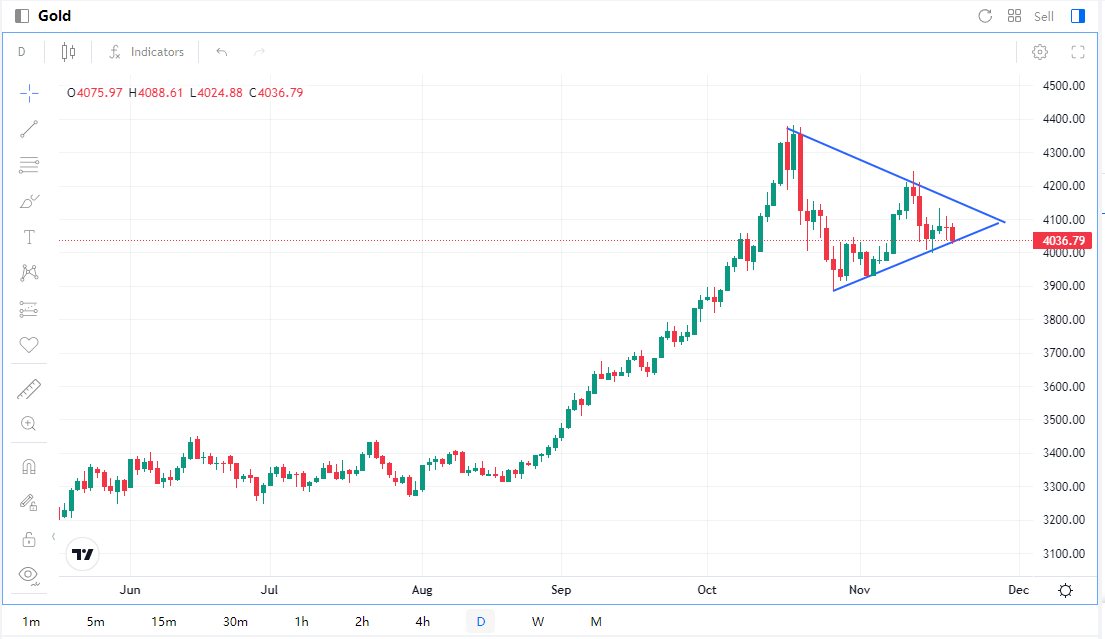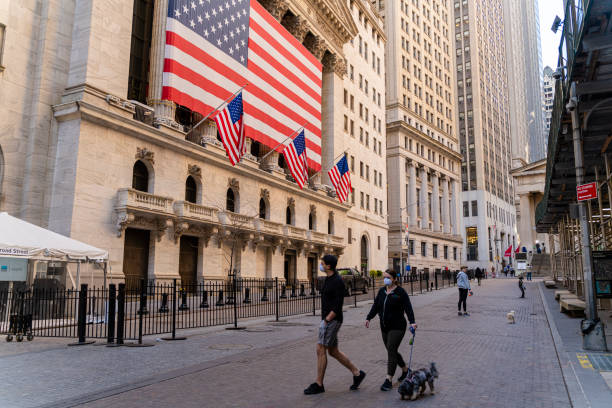September Jobs Report Clouds Fed’s Rate Cut Path Gold's Lack of Upward Momentum May Trigger Sell-Off


TradingKey - The U.S. government released the delayed September nonfarm payrolls report last week, showing a stronger-than-expected 119,000 jobs added—far exceeding the forecast of 50,000. However, the unemployment rate unexpectedly rose to 4.4%, the highest level in nearly four years. As the final employment report before the Federal Reserve’s December meeting, the robust headline data has significantly dampened market expectations for a year-end rate cut.
U.S. stocks closed lower on Monday, with all three major indexes declining. Gold prices traded sideways, hovering near $4,070 with narrow volatility, but face increasing downward pressure and could test support at $3,900 in the near term.
The September jobs report revealed that the U.S. economy added 119,000 new positions, the strongest gain since April. In contrast, the jobless rate climbed from 4.3% to 4.4%, marking its highest level since October 2021.
Morgan Stanley noted that while job growth beat forecasts, the rising unemployment rate may signal that labor demand is entering a “turning point,” especially amid cooling hiring sentiment among small and medium-sized businesses.
The strong labor data has sharply reduced bets on a December rate cut. According to the CME FedWatch Tool, the probability of a 25-basis-point reduction at the upcoming meeting has fallen to around 35%, down dramatically from the near-certainty priced in before the government shutdown.
U.S. equities were the first to react. The Dow Jones Industrial Average fell 0.84% to 45,752.26, the S&P 500 dropped 1.56% to 6,538.76, and the Nasdaq Composite slid 2.15% to 22,078.05.
Large-cap tech stocks declined across the board. Nvidia surged as much as 5% during the session but erased gains to close 3% lower. Despite reporting Q3 revenue that topped expectations, investors remain skeptical about whether AI can generate sufficient revenue or profit to justify massive capital expenditures.
Meanwhile, the minutes from the FOMC’s October 28–29 meeting showed that many policymakers believed “holding the target range unchanged through the end of 2025 could be appropriate.” The document stated: “Many participants judged that, based on their outlooks, maintaining the target range unchanged for the remainder of the year might be suitable.”
With inflation still above the Fed’s 2% target and the labor market showing underlying strength, the path toward a December rate cut has become increasingly obstructed—a development that could further weigh on gold prices.

Source: Mitrade — Gold Price Action
Technically, gold prices are exhibiting a pattern of consolidation and retreat, signaling a shift toward a weaker overall trend. On the daily chart, gold has formed a triangular pattern, with key moving averages converging closely, indicating a tight battle between bulls and bears.
The KD indicator shows both lines below 50 and trending downward, suggesting bearish momentum is building and could continue to pressure prices in the near term.
On the upside, initial resistance is seen at $4,150, followed by $4,250, with a more critical barrier at $4,350. On the downside, initial support lies at $3,940, followed by $3,850, with stronger support at $3,750.






